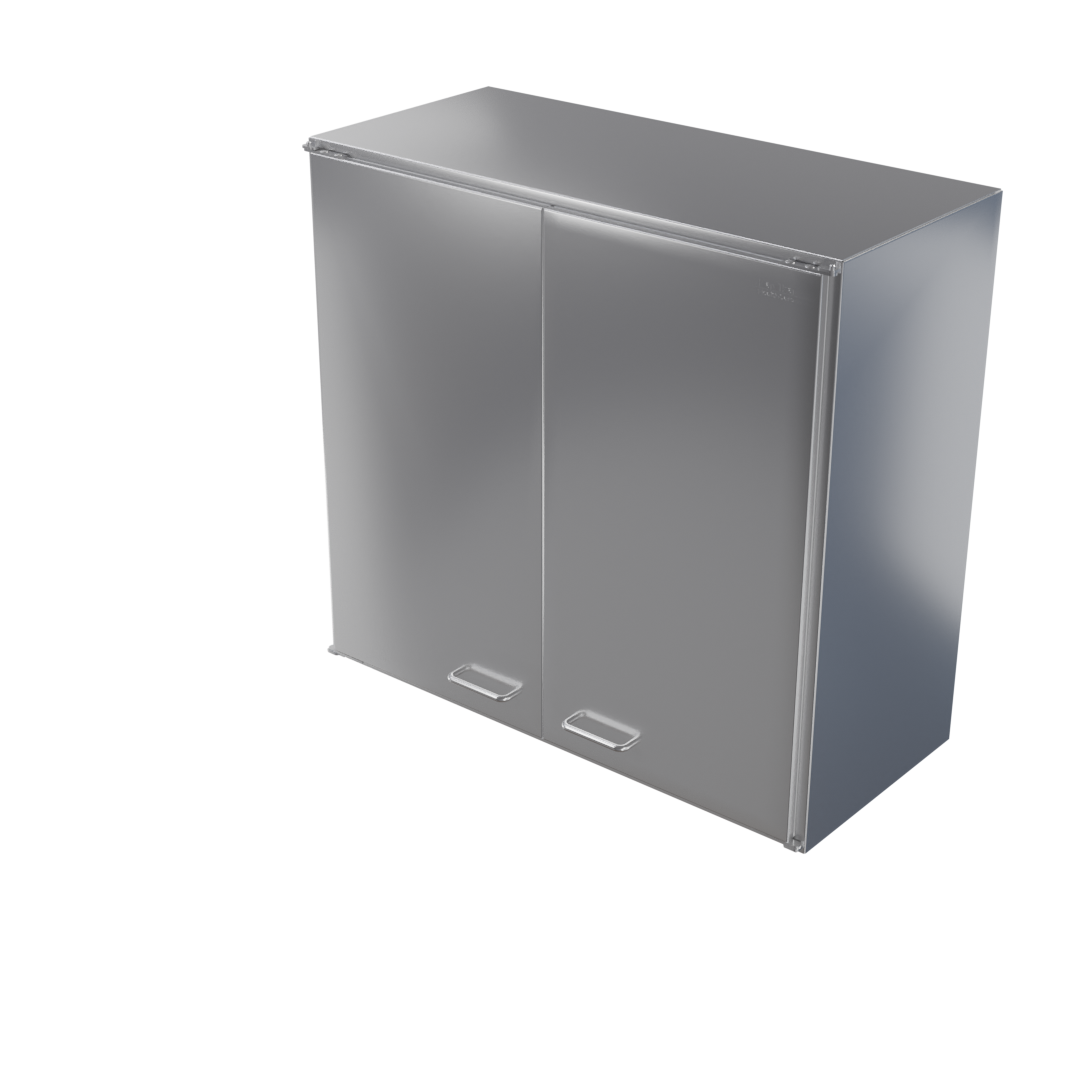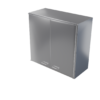Our stainless steel wall cupboards provide plenty of hygienic storage space.
Our range of cupboard designs can be used for putting together a set of cupboards that best suits the intended use.
By separate order, cupboards will also be manufactured with lockable doors or with a slanted roof.
As part of a standard delivery, the cupboard will be fitted with two incrementally adjustable solid or perforated plate shelves. Where necessary, our cupboards can also be delivered with stainless steel wire shelves for drying dishes, etc.
Technical information
Models
5080 Wall cupboard
Materials
Stainless steel AISI 304 (standard)
Also available acid-proof steel AISI 316
Standard widths
400, 500, 600 mm (1-door)
800, 1000, 1200 mm (2-door)
Standard depth
350 mm
Standard length
700 mm
Shelf alternatives
Solid plate shelf, perforated plate shelf
Quantity of shelves in standard delivery
2 pcs
Height adjustment
50 mm increments
Installation
Wall mount
Manufacturer
Kavika HealthCare Oy, Mursketie 6, 15860 Hollola
contact@kavikahealthcare.fi, www.kavikahealthcare.fi

